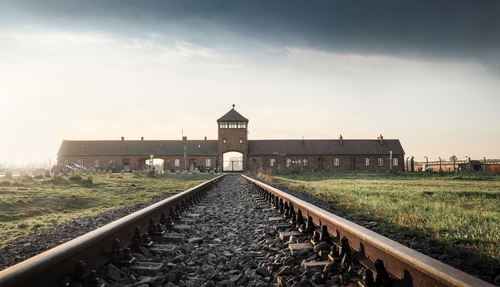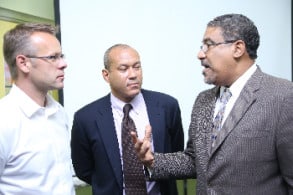The Poignant Buildings of Auschwitz

If you’re touring eastern Europe, visiting Auschwitz should be on your itinerary. Probably one of the most familiar to come out of World War Two, the German-built concentration camp was opened in May 1940 and operated until January 1945. The complex is home to three of the largest concentration camps built by the Nazis as they sought to assert fear and dominance across Europe in addition to committing the worst genocide the world has ever seen.
The entrance, with the ominous railway lines through the middle, is one of the most identifiable buildings that survived the conflict. If you ever find yourself in Poland, a trip to Auschwitz feels almost like a necessity to any visitors to this beautiful east European country. Below are some of the haunting yet poignant buildings of one of the most famous places in history.
The Red Brick Entrance
Perhaps the most identifiable part of Auschwitz-Birkenau is the huge red brick structure that marks the entrance to the camp. The long railway tracks leading up and into the camp marked the end of the journey from Germany to the concentration camp for millions of people. Cattle carts and freight trains were used to transport prisoners to the camp, where most were sent straight to the gas chambers. The entrance to the camp and the railway tracks are preserved and look exactly how they did during the war.
The Barracks
Not all arrivals to Auschwitz were executed on arrival and some prisoners were forced to build the barracks they would eventually live in. They had no windows, were not insulated against the cold and contained no means of sanitation. Some of the buildings consisted of brick, while others were made of wood. Conservation works have been carried out on some of the wooden barracks to symbolize the horror and terror of the camp and as a permanent memorial to those who died or managed to survive the camp.
Gas Chambers
Perhaps the most horrific moments of the camp, and indeed the entire war, came when prisoners, mainly Jewish, were sent to the gas chambers for execution. An estimated 960,000 Jewish prisoners were executed within the chambers, with approximately 865,000 on arrival. In total, around 1.1m people were sent to the gas chambers of Auschwitz, with the victims being told there were to bathe and disinfect before joining the camp. It is possible to visit the chambers in Auschwitz today.
Crematoria
Construction on the first crematoria began in 1941 and by 1943, three ovens had been installed. In 1942, plans for two further crematoria were produced and by June 1943, the camp added a fourth. A tour of Auschwitz will take you through the ruins of the crematoria and the associated gas chambers.
A Permanent Reminder Of A Dark Stage of History
People across the world know the story of Auschwitz and how it was used. But it’s only when you enter the camp do you realize the true extent of the horror, pain and suffering experienced. In 1977, Auschwitz was named a UNESCO World Heritage site and serves as a permanent reminder of one of the darkest periods of our history.





